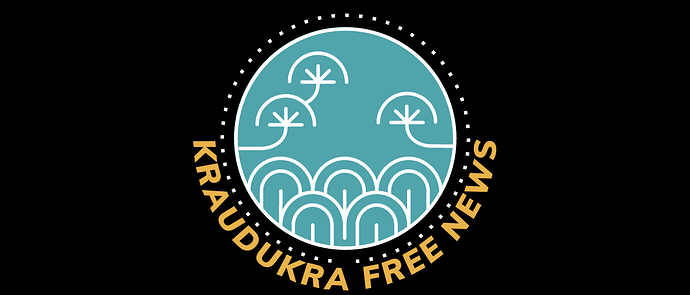Signs of De-escalation in Varekko as Council Resurfaces, Aid Access Partially Restored
Ka’atria, Okhoa— After weeks of escalating unrest across the region and more than a week of siege-like conditions in Varekko, a fragile calm appears to be returning to parts of the Okhoan capital. International monitors and local observers are reporting tentative signs of de-escalation: several missing members of the Regional Council have reemerged, aid convoys have been granted limited access to besieged districts, and communications blackouts are gradually being lifted in previously isolated areas.
The crisis had reached a critical point in recent days. Humanitarian convoys were repeatedly turned away at military checkpoints. Large swaths of the city were plunged into rolling blackouts, and there were credible reports of targeted detentions and armed standoffs between security forces and local militias. However, a coordinated diplomatic initiative—led by the World Forum (WF) and quietly supported by Zuhlgan and Krauanagaz—appears to have pressured the Okhoan Regional Council into authorizing limited humanitarian corridors late Wednesday evening.
One such corridor enabled a joint WF–International Federation for Humanitarian Aid (IFHA) convoy to deliver emergency medical kits and water purification units to Kavressa and Nalyot Boroughs, two of the districts most heavily affected by recent violence.
“It’s not a full opening, but it’s the first tangible breakthrough we’ve seen,” said Lúmakh Brinnen, field coordinator for IFHA. “We were able to get in, treat children with respiratory infections, and leave without being shot at. That wasn’t possible last week.”
In a surprise televised address early Thursday—the first since the unrest escalated—Chairman Drian Vollat appeared flanked by several previously missing council members, including Councillor Selea and Deputy Chairwoman Sya Levak. Though both officials appeared visibly shaken, Levak offered a brief statement, confirming that “dialogue is underway with all relevant stakeholders” and calling for “an immediate restoration of civic life in all districts.”
Yet Levak’s silence on the circumstances of her disappearance, and the Council’s refusal to take questions from the press, have fueled speculation about internal fractures—possibly even coercion by hardliners within the Okhoan Civil Defense Patrol (OCDP), the region’s primary security force.
Independent observers remain cautious. While the reappearance of officials has helped dampen rumors of a full-blown coup, leaked documents—allegedly from within the OCDP—suggest that multiple units refused orders to raid student dormitories or suppress unarmed protests. These accounts remain unverified but align with reports of unrest within the security apparatus. Notably, two key military installations in the Kharap Valley were reportedly “abandoned without incident,” raising further questions about internal dissent among security forces.
Meanwhile, Varekko’s most volatile flashpoints have begun to stabilize. Armed militias have reportedly withdrawn from the University of Civil Studies following a mediation effort led by local elders and clergy. Civil society organizations, many of which had been forced underground, are reemerging to provide aid and restore essential services.
In a hopeful development, two prominent activists—journalist Hana Priz and human rights lawyer Derrin Matool—were quietly released from detention late Wednesday night. Though neither faced formal charges, both remain under travel restrictions. International human rights monitors have welcomed their release as a positive sign, even as questions persist about broader crackdowns.
The fate of 22 additional activists, accused of “cyber sedition” for posts made during the blackout, remains uncertain. However, the Council’s legal bureau issued a statement promising “transparency and access” ahead of their May 22 court appearance. Families have reportedly been allowed limited contact, and attorneys from the Independent Okhoan Bar Association have gained preliminary access to the case files.
Internet access, which had been suspended for nearly ten days in central Varekko, has been partially restored. Broadcast services have also resumed, albeit under strict editorial oversight.
Regional powers are monitoring the situation closely. The Zuhlgani Navy confirmed that aerial and maritime surveillance operations around Varekko continue but emphasized that no peacekeeping deployment is being considered “at this stage.” In a televised statement, Krauanagazan President Thalira Renkara reiterated her country’s call for “a genuine and inclusive reconciliation process,” while commending the “civic resilience” of the Okhoan people.
Despite these developments, experts caution that the situation remains highly fragile.
“The reappearance of the Council and the opening of aid corridors are important steps,” said Ka’atria-based political analyst Nessa Karántal. “But unless Okhoa addresses the deeper grievances—questions of governance, autonomy, and civil rights—this could simply be a lull before another eruption.”
For now, weary residents are embracing the momentary calm. In Nalyot, schools have reopened for the first time in a month. Volunteers are clearing rubble from public squares. And across the city, murals are beginning to appear—not demanding vengeance, but calling, simply, for peace.
